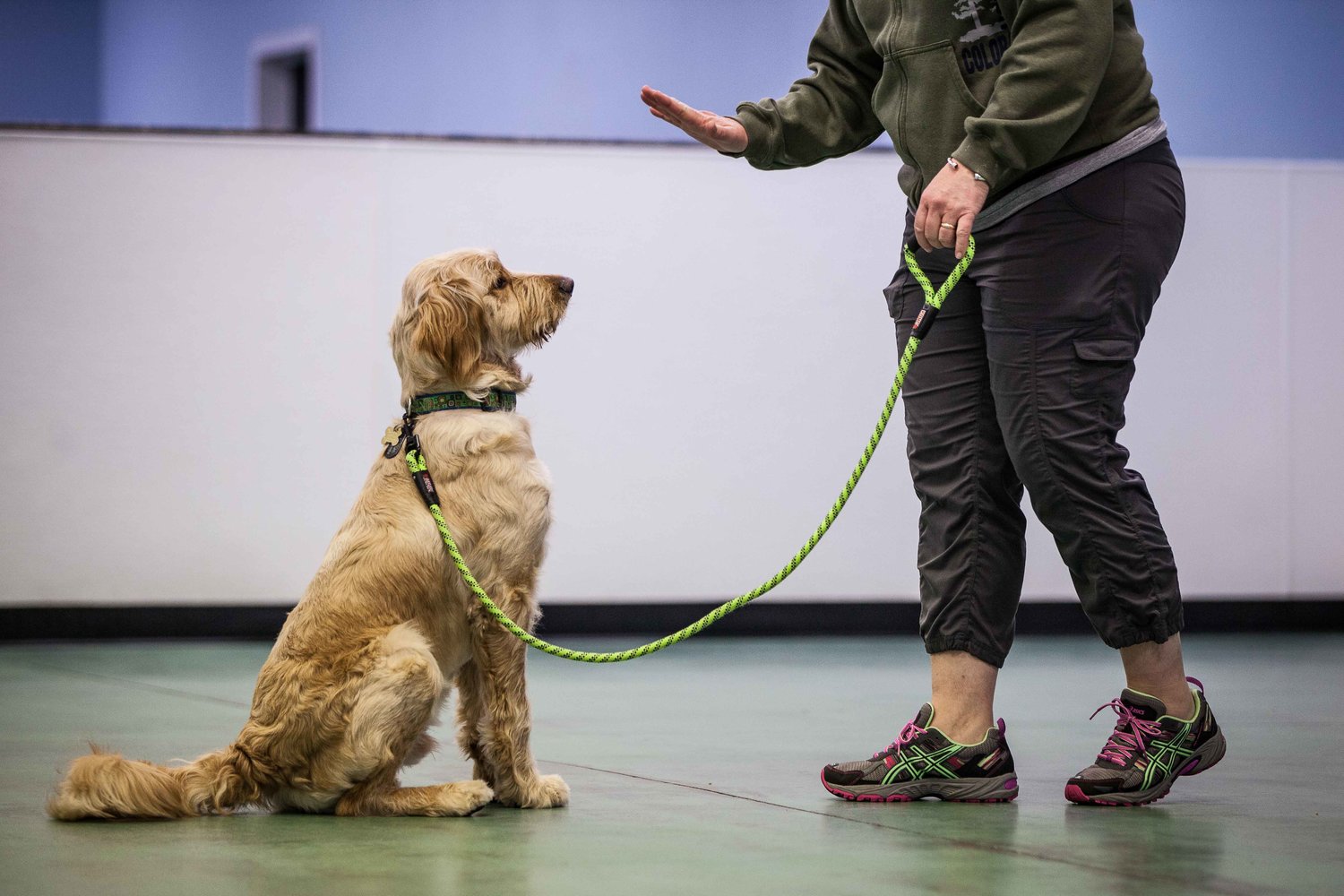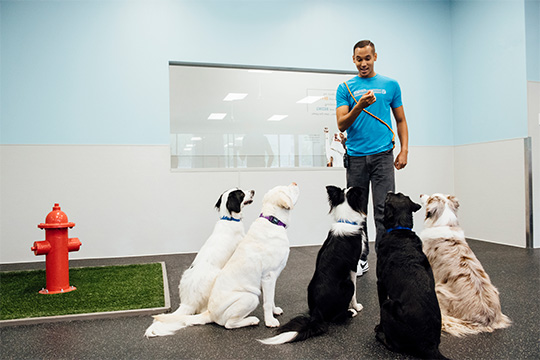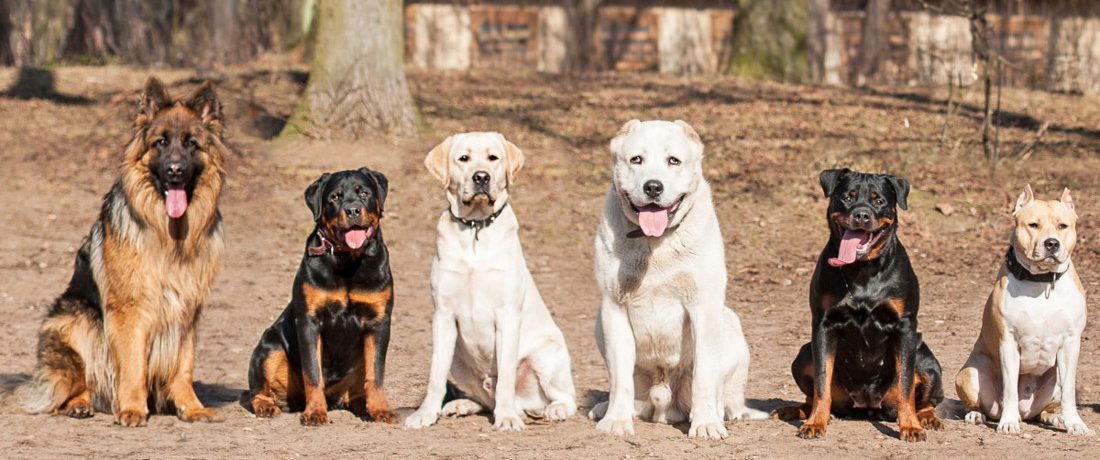Start Your Dog's Journey with Puppy Training That Builds Trust and Respect
Novice's Overview to Effective Pet Dog Training in your home
Successfully training a pet in the house requires a nuanced understanding of canine behavior and efficient interaction approaches. Developing clear training goals, making use of high-quality benefits, and keeping consistency across relative are crucial aspects. In addition, integrating training into day-to-day regimens can boost both interaction and retention. However, numerous newbie instructors run into challenges that may hinder progress. To navigate these complexities successfully, it's important to explore numerous vital elements that can change your technique and bring about a harmonious partnership with your pet dog. What fundamental principles should every novice grasp to make certain success?
Recognizing Pet Dog Habits
Recognizing canine behavior is essential for reliable training and cultivating an unified connection in between human beings and their canine buddies - Puppy Training. Dogs interact mostly via body language, vocalizations, and faces, making it vital for owners to translate these signals precisely. Identifying behaviors such as tail wagging, roaring, or cowering can offer insights into a pet dog's emotion and intents
Furthermore, comprehending the all-natural reactions of pet dogs, such as their pack way of thinking, helps proprietors develop leadership duties within the home. This is vital for creating an organized atmosphere where pets really feel safe and are a lot more responsive to training. Canines are likewise affected by their socialization experiences; early direct exposure to various atmospheres, individuals, and other animals can substantially form their habits later in life.
Usual behavioral issues, such as aggression, anxiety, or too much barking, often originate from misunderstandings or unmet requirements. Observing and addressing these concerns promptly can protect against acceleration and ensure a positive training experience. By fostering a deep understanding of dog actions, owners can customize their training techniques to fit their canine friends, eventually leading to a mannerly and satisfied animal.

Vital Training Tools
A well-equipped training area can substantially boost the performance of canine training at home. Crucial training devices ensure that both the pet dog and the fitness instructor can participate in productive sessions that promote learning and bonding.

Spending in a sturdy chain and a comfy, well-fitting collar or harness is vital for safety and control. These tools assist develop boundaries and guarantee the canine remains protected throughout training. Additionally, an assigned training location, without disturbances, help concentration for both the fitness instructor and the pet.
Educating aids such as training pads, cones, or dexterity equipment can also enhance the experience by introducing selection and obstacles. Having a note pad or digital application for tracking progression can be very useful, enabling you to keep in mind successes and locations for enhancement. Utilizing these important devices will certainly produce a positive training setting and lay the structure for efficient learning.
Developing a Training Routine
Developing a constant training regimen is necessary for efficient dog training in the house. A well-structured routine not just aids in enhancing desired habits yet likewise supplies redirected here your pet dog with a sense of security and predictability. To produce an effective training regular, begin by determining certain training goals, such as fundamental commands, chain walking, or housebreaking.
Pick an assigned time each day for training sessions, preferably when your canine is alert and responsive. Sessions must be short, approximately 5 to 15 mins, to maintain focus and stop tiredness. Consistency in timing and atmosphere will certainly improve your dog's discovering experience.
Incorporate training into day-to-day activities to strengthen abilities. For example, method commands during walks or nourishment, which integrates discovering right into all-natural regimens. Additionally, continue to be flexible and adjust the routine as needed, useful source suiting your canine's power degrees and state of mind.
Positive Reinforcement Methods

When executing positive support, it is important to pick incentives that are motivating for your pet. High-value treats, such as little pieces of hen or cheese, can be particularly efficient during training sessions. In addition, varying the benefits can keep your pet dog's interest and interest.
Beginning with simple commands, like "rest" or "remain," and progressively development to a lot more complex jobs. Uniformity is vital; make certain that all family participants make use of the exact same commands and reward systems to stay clear of complication.
Moreover, it is crucial to remain individual and stay clear of disappointment. Canines, like human beings, find out at their own pace. By cultivating a supportive training atmosphere with positive support, you can boost your dog's knowing experience while enhancing the bond between you and your hairy companion, preparing for successful training end results.
Typical Educating Difficulties
While educating a canine in the house can be a rewarding experience, it commonly includes a collection of common challenges that can test both persistence and uniformity. One prevalent problem is diversion. Pets may end up being quickly sidetracked by sounds, motions, and even fragrances in their setting, making it challenging to preserve their emphasis throughout training sessions.
An additional obstacle is inconsistency in commands and reinforcement. It can prevent and puzzle the canine progress if household participants utilize different signs or incentives. Developing a unified technique is crucial for reliable interaction.
In addition, pet dogs can experience stress or stress and anxiety, particularly if they do not understand what is expected of them. This can lead to unfavorable behaviors, such as barking or eating.
Ultimately, the timing of reinforcement is vital. Delayed incentives can decrease the effectiveness of positive reinforcement, as pets may fall short to link the behavior with the benefit.
Conquering these obstacles calls for commitment, clear interaction, and an organized training plan - Puppy Training. Recognizing and attending to these common challenges will certainly pave the way for a more effective and pleasurable training experience in the house
Conclusion
In verdict, successful pet dog training in the house necessitates a thorough understanding of canine habits and reliable interaction approaches. By developing clear training goals and using high-grade deals with alongside favorable support, the training procedure comes to be extra satisfying for both the pet and the trainer. Flexibility, patience, and consistency are vital elements that help with understanding. Eventually, incorporating training right into day-to-day regimens improves the bond in between canine and owner, making the experience both productive and pleasurable.
Developing a consistent training regimen is important for effective dog training at home.Positive reinforcement methods are fundamental to reliable canine training, advertising wanted behaviors via benefits instead than penalty. By fostering an encouraging training atmosphere via positive support, you can improve your pet's learning experience while strengthening the bond in between visit this website you and your hairy buddy, laying the foundation for successful training results.
In final thought, successful canine training at home requires a thorough understanding of canine behavior and reliable communication methods. By establishing clear training goals and utilizing high-grade treats along with positive support, the training procedure becomes a lot more gratifying for both the canine and the fitness instructor.